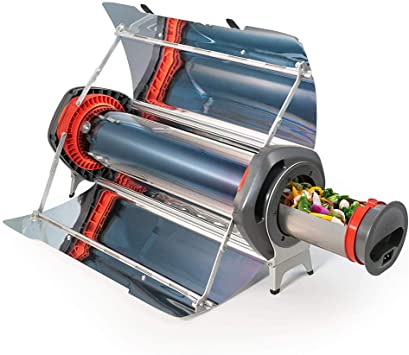Live off the grid!” That’s part of the allure of getting an electric boat and using solar, wind and hydroregeneration to power everything on board. No more diesel engine, no more propane stove, completely disconnect. Completely off-grid.
However, as Lee Corso on ESPN’s College Game Day says, “Not so fast my friend!” That’s because there is no electric cooking system today that is viable on a pure electric boat.
So, with the help of a few other sailors who between them and I have sailed over 50,000 miles on electric boats and spent years living onboard, Green Yachts put together this blog post about cooking on an electric boat.
And, the exciting part is an idea we have at the end of this blog.
First, an overview of today’s options for cooking on an electric boat:
LPG (Propane)/Butane - Most recreational boats today use a stove fueled by propane if used in the United States or butane in Europe. With two tanks, it provides a ~20-day supply of fuel for cooking. There are a plethora of different bottle sizes and adapter fittings meaning a boater traveling around the world has to get different gas containers that may or may not fit in a boat’s propane locker. And, a boat needs the propane locker to be located in the cockpit, be vented to the exterior, drain and have a solenoid operated from the galley that shuts off the gas flow at the regulator because propane is heavier than air and thus sinks, can collect in the cabin and if ignited, will create an explosion onboard.
Induction cooktops and microwave ovens – an induction cooker or other electric stove is the safest stove one can have on board because there are no fuels or open fires onboard. Electric stoves are common on large boats that have a robust AC power system supplied by one or more marine generators. On sailboats and other recreational boats, an induction cooktop and microwave oven should only be used on an electric boat with a marine generator because they are energy intensive! A tale of two different boats illustrates this. Derek Rupe, an early pioneer in electric propulsion, has a gimballed induction cooktop and microwave oven on his Tripp 37 sailboat that he has been living on, cooking on and taking up and down the east coast of the US for years. His boat has a DC marine generator onboard, which makes an energy intensive induction cooker viable. Jimmy Cornell put an induction cooker and microwave onboard without a DC marine generator and had to turn back from his planned around the world trip shortly after getting started. In our opinion at Green Yachts, the #1 reason for this unfortunate outcome was that the induction cooker and microwave drew far more power than hydroregeneration under sail could provide.
Alcohol Stove – An alcohol stove is the primary means of cooking onboard for both Sailing Uma and the Rigging Doctor, both of which are electric sailboats that have crossed the Atlantic . Sailing Uma also has a rice cooker and microwave that they use “sparingly” and mostly when plugged in to shore power. Modern alcohol stoves store fuel in an absorbent material rather than under pressure like older alcohol stoves from the 70s and 80s, Like any fuel, alcohol has to be resupplied in port.
CNG (Compressed Natural Gas) – Also found on older boats and on boats from southern California. Natural gas is lighter than air so it dissipates instead of collecting like propane and it is burns cooler than propane and thus is less explosive but since when does the word less making explosive sound any better on a boat? On the plus side, burning natural gas creates 50-60% less emissions than burning propane. Like for alcohol stoves and LPG, CNG has to be resupplied in port.
Future Innovation in Marine Cooking?
In our opinion at Green Yachts, while all of the above are viable depending on your boat setup, none of them are a slam dunk solution on an electric boat. All of them have their pros and cons. We believe the future of cooking on electric boats will look different than any cooking system we know of on boats today.
Two technologies we think have a lot of promise are solar cookers and pressure cookers. Both of these use different strategies that result in highly efficient cooking. We also like the idea of a multipurpose cooking station that is convenient and easy to clean.
Here’s an example of a solar cooker that is perfect for a picnic, a 12V pressure cooker that works great on an RV, and lastly, a multipurpose cooking station from the tiny homes movement.
Imagine if you could combine these three into a marine cooking system that:
- Adds a slot in the multipurpose cooker for a solar cooker in which the solar cooker plugged in when slid into place.
- The multipurpose cooker also incorporates a 12V pressure cooker providing a secure location for it rather than it being at risk of flying off the galley counter. These two additions add highly efficient cooking that doesn’t use a lot of power.
- Make the coffee maker, griddle and toaster oven efficient and like the solar cooker and pressure cooker powered by 12V or 48V DC power. Currently, the multipurpose cooker is designed for an AC system in a land-based home.
- Create a complimentary station in the cockpit where the solar cooker can be put when pulled out of its slot in the galley and secured with the solar screens open for cooking so the solar cooker doesn’t go flying or the solar reflector screens don’t close or get damaged when the boat tacks or heels. And, this cockpit station needs to not be in the way when not in use for cooking.
- Make sure everything can be washed in salt water without rusting
- Gimbal it of course!




Leave Comment